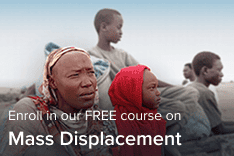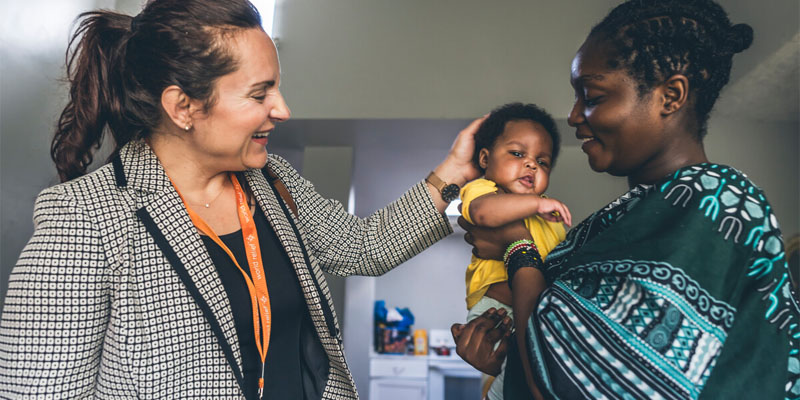Hope Amid the Humanitarian Crisis in Myanmar
|
Getting your Trinity Audio player ready...
|
On March 28, 2025, a 7.7 magnitude earthquake in Myanmar killed and injured thousands of people. Many were trapped under the rubble of collapsed buildings — Ma Zar Chi Thient’s 3-year-old daughter was one of them.
It was a day that quickly became the family’s nightmare.
The family’s day started like any other. As a single mother living in the Mandalay region in Myanmar, Ma Zar Chi Theint worked as a cement bag cleaner to take care of Ma Khaing Thazin, her 3-year-old daughter. On the morning of the 28th, her grandmother arrived to watch Ma Khaing Thazin while Ma Zar Chi Theint was away.
But by that afternoon, disaster struck. A 7.7 magnitude earthquake rattled across Mandalay. Ma Zar Chi Theint rushed back to her daughter, only to learn that she had been buried in the rubble of a four-story building.
For hours, Ma Zar Chi Theint dug through the rubble in search of her daughter. Finally, Ma Zar Chi Theint found her — alive, but with her eye gouged out.
Together, the two rushed to the hospital, only to find it overwhelmed and inaccessible due to the severity of the earthquake. Eventually, Ma Zar Chi Theint was able to find an eye specialist to care for her daughter, who told them that she would need surgery.
But that wasn’t an option: Under normal conditions, the nearest city where the operation could take place was a 10-hour bus ride away. Now, the earthquake made travel to that city virtually impossible. The eye specialist understood the situation — and operated on Ma Khaing Thazin in the car.
The Humanitarian Crisis in Myanmar
Families from Myanmar — like Ma Zar Chi Theint’s — know what it’s like to live through trials and uncertainty. Even before the earthquake in March, the country had been in the grips of a devastating humanitarian crisis as a result of a civil war that’s been building since 2021. According to the UNHCR, Myanmar currently has a total of nearly 3.6 million internally displaced persons (IDPs), and 1.5 million others have fled the country as refugees and asylum-seekers. And now, with such a destructive earthquake added to the mix, that number is only expected to increase.
But thankfully, the story doesn’t end there. Even in the midst of crisis, God is working for the good of Myanmar families both in Myanmar and around the world. That’s why World Relief pursues a “here and there” response to global humanitarian crises — whether “there” in Myanmar or “here” in the United States, God is at work to bring about restoration and healing for Myanmar families. It is our privilege to join him — and partner with others around the world — in this important work.
Responding “There” and “Here” for Myanmar Families
After Ma Khaing Thazin’s surgery was successfully completed, Ma Zar Chi Theint continued to look after her young daughter. But she ran into another problem — the cost of medicine for her recovery was way beyond what she could afford.
Thankfully, God used our donors and partners at World Relief to rise up to the moment. Soon after the surgery, Ma Khaing Thazin got connected to World Relief’s on-the-ground partner, World Concern, as they were responding to the earthquake in Myanmar. Thanks to the generosity of our donors, World Relief was able to supply financial support to World Concern — who in turn provided Ma Khaing Thazin with the money she needed to care for her daughter.
“I am very happy to have received these finances so my daughter can receive treatment at an inconvenient time,” Ma Zar Chi Theint said. “If I did not receive this support, I would have had to borrow money from others to treat my daughter’s injury.”
This is just a glimpse of how God is using generosity and partnerships to make a difference in the lives of Myanmar families. That’s a story we’ve seen repeated time and again — including “here” in the United States.
For years, World Relief has been working in partnership with churches, volunteers and community members to welcome Myanmar families as refugees into the U.S. One such family is Too Too and Poe Wah’s. As teenagers in the late 1990s, Too Too and her husband Poe Wah both made the decision to flee their homes in Myanmar after they faced threats of violence and imprisonment. For several years, the couple lived in a refugee camp, where they had their first son.
It was a season filled with uncertainty and struggle.
“I was always hungry, so my husband got this little job with one of the aid agencies so we could have a little extra money and he could get me food,” Too Too said.
Then, after many years of waiting, Too Too, Poe Wah and their son were welcomed into the U.S. by World Relief Chicagoland, alongside many church partners and volunteers.
Now, Too Too and Poe Wah find motivation from their faith in Jesus to multiply their impact and support families in Myanmar, knowing the trials and suffering so many of them are facing. After a recent trip to the Thai-Myanmar border, Too Too and Poe Wah connected with a local pastor running a ministry that cares for hundreds of displaced kids and young people fleeing Myanmar — children and young adults who have not been given legal status or protection by Thailand.
“We didn’t plan this, but we ended up buying a house to help her with her ministry.” Too Too said. Too Too continues to support the work at the Thai border by giving generously to the ministry.
The humanitarian crisis in Myanmar is both complex and devastating. And the cataclysmic 7.7 magnitude earthquake has only added to the difficulties. But both “there” in Myanmar and “here” in the U.S., God is at work on behalf of Myanmar families. He sees them. And he cares for them. And he’s using people all around the world — churches, ministries, volunteers, donors, refugees — to bring about healing.
That’s what matters to us at World Relief — to see hope restored, to partner with God and his people to bring this hope and healing.

Samuel Heard serves as a content specialist at World Relief. His writing has appeared in a variety of outlets, including Baptist Press, Mere Orthodoxy, the Center for Faith and Culture and elsewhere. He lives in Upstate South Carolina with his wife and two children.


